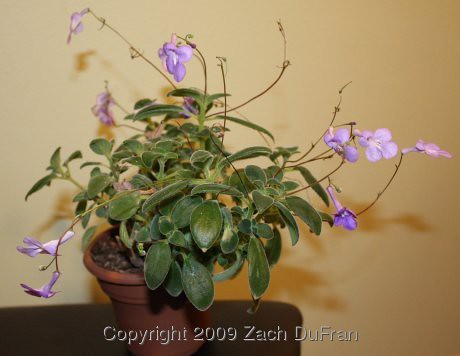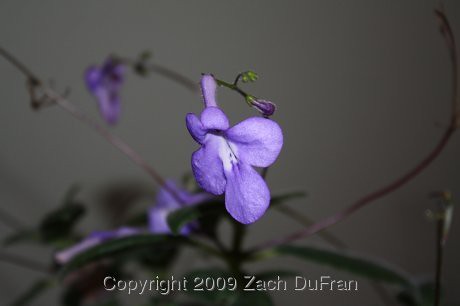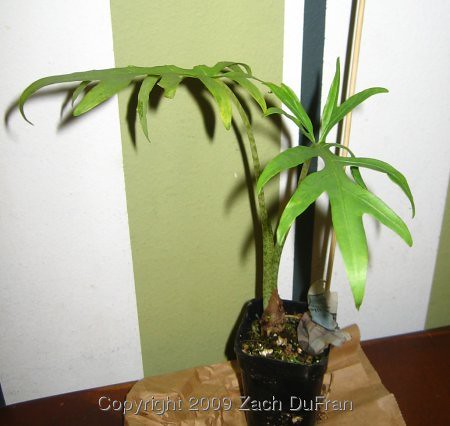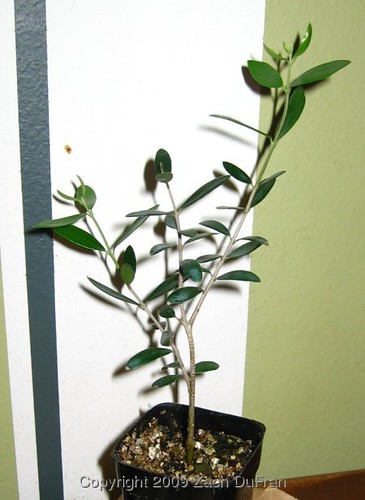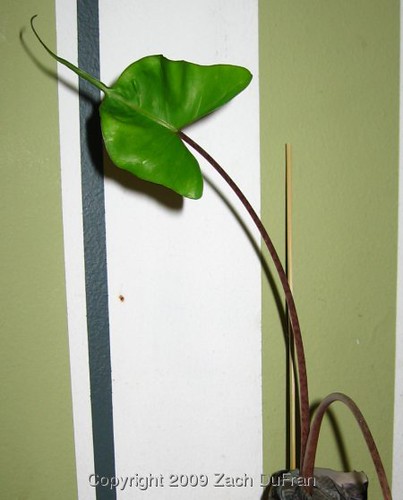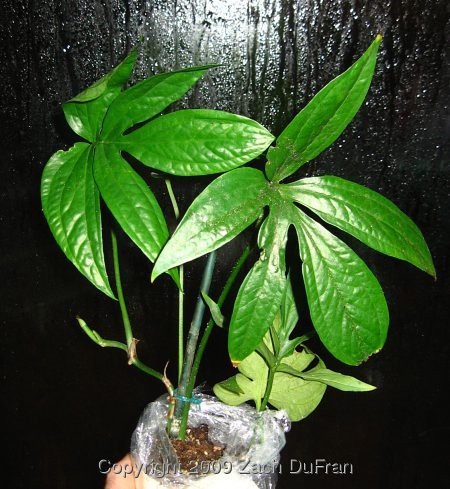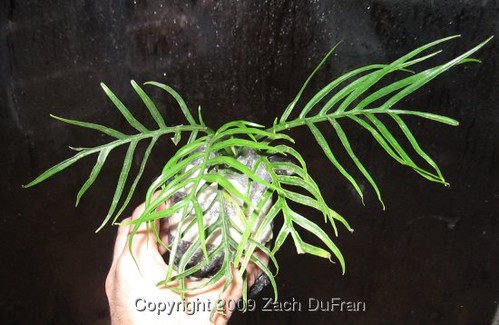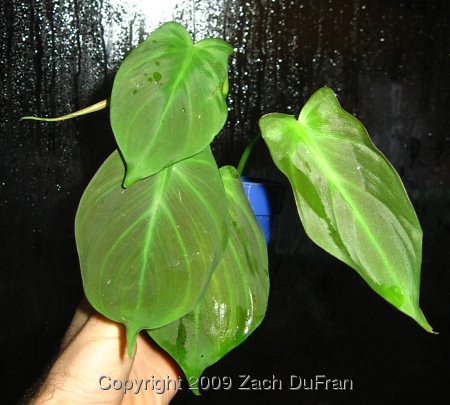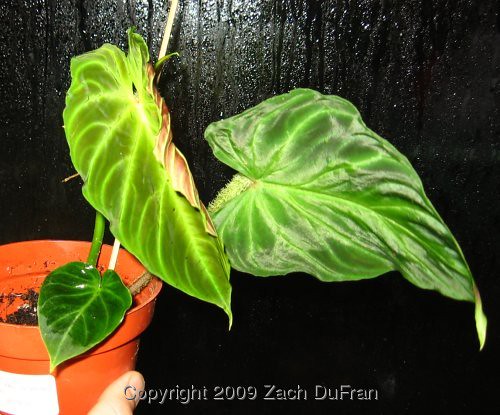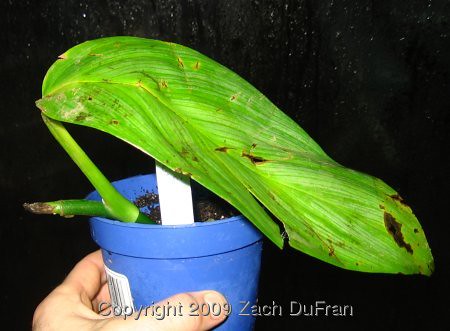After just a week in the greenhouse, I could already tell that the plants were happy. Immediately my Aroids began to produce aerial roots where they hadn't before. In fact, I have a variegated Monstera deliciosa that now has an aerial root about 5 feet long. Pretty impressive for a plant that is only about 8 inches tall with 2 leaves!
Anyway, one of the best indicators of a plant's happiness is their bloomage. Not that a non-blooming plant is unhappy, but it's a pretty sure bet that a blooming plant is happy. In some rare cases, a very unhappy plant will produce blooms just before dying - a last ditch effort to spread seed and ensure its survival through its offspring. But you can usually tell if your plant is blooming for this reason.
I don't have very many "blooming" plants. Most of my plants do flower at some point in their life cycles, but their flowers are not particular showy, colorful or desirable to look at. But those few that I have have been performing for me pretty well since being moved into the greenhouse. The Datura (Angel Trumpet) has been producing yellow trumpet blooms constantly, followed by nice, full seed pods. The lime tree put out a profusion of blooms once moved in and is now desperately trying to make fruit from those blooms, even though I can't seem to give it enough water. Christie's Streptocarpus (False African Violet) has been covered in little blue-purple flowers since we got it several weeks ago.
And my favorite blooming plant in my collection has even been performing. I have two Passiflora x alatocaerulea (a hybrid Passionflower) in my greenhouse that have been producing a couple of blooms each week. We purchased both of these plants last summer, keeping one and giving the other as a gift to Christie's grandmother for mother's day. Since they are not hardy plants in our climate, I offered to overwinter her plant in the greenhouse with my own. I was able to keep it attached to her grandmother's trellis and temporarily hang the trellis in the greenhouse. Assuming I can keep it from getting too tangled with my other plants and greenhouse itself, it should be easy to transport back to her house in the Spring.
With Christmas day just a couple of days behind us, I figured now is a good time to share about the symbolism and name for the Passionflower. If you have seen a Passionflower bloom before, you were probably amazed at the complicated sets of elements that are present. There is just so much going on with each bloom. It's not a simple set of petals with a colored center, like members of the Asteraceae family. The Passionflower has many different parts and the numbers of those parts are significant in the Christian culture. In addition, the Spanish saw a resemblance in this flower and a Saint's halo, commonly depicted in Roman Catholic art.
Back to the numerology of the bloom. The bloom consists of five petals and five sepals, which represents the ten apostles - leaving out Judas the betrayer and Peter the denier. The filaments can represent the thorns in Jesus's crown. Apparently there are 72 of them and that is how many thorns were in Jesus's crown, though I'm not sure where that knowledge came from... There are many myths and elements to teh Catholic faith that are not shared by the Protestant Christian denominations, of which I am a member. There are five stamens, which is the number of wounds that inflicted Jesus. In fact, the plant is referred to as "Flower of the Five Wounds" by South American Catholics.
Additional symbolism can be found in the shape of the leaves of some species of Passiflora, such that they look like spears, which pierced Jesus's side. And some dots underneath the leaves are to represent the 33 pieces of silver which were paid to Judas for the betrayal.
Passionflower blooms are only open for one day, the same time that Jesus suffered on the cross. After their show the bloom closes rather than falling from the vine, like many other flowers do. This closing symbolizes hidden wisdom and Jesus being placed into the tomb.
I hope that you had a wonderful Christmas and I wish the best in the New Year.
Anyway, one of the best indicators of a plant's happiness is their bloomage. Not that a non-blooming plant is unhappy, but it's a pretty sure bet that a blooming plant is happy. In some rare cases, a very unhappy plant will produce blooms just before dying - a last ditch effort to spread seed and ensure its survival through its offspring. But you can usually tell if your plant is blooming for this reason.
I don't have very many "blooming" plants. Most of my plants do flower at some point in their life cycles, but their flowers are not particular showy, colorful or desirable to look at. But those few that I have have been performing for me pretty well since being moved into the greenhouse. The Datura (Angel Trumpet) has been producing yellow trumpet blooms constantly, followed by nice, full seed pods. The lime tree put out a profusion of blooms once moved in and is now desperately trying to make fruit from those blooms, even though I can't seem to give it enough water. Christie's Streptocarpus (False African Violet) has been covered in little blue-purple flowers since we got it several weeks ago.
And my favorite blooming plant in my collection has even been performing. I have two Passiflora x alatocaerulea (a hybrid Passionflower) in my greenhouse that have been producing a couple of blooms each week. We purchased both of these plants last summer, keeping one and giving the other as a gift to Christie's grandmother for mother's day. Since they are not hardy plants in our climate, I offered to overwinter her plant in the greenhouse with my own. I was able to keep it attached to her grandmother's trellis and temporarily hang the trellis in the greenhouse. Assuming I can keep it from getting too tangled with my other plants and greenhouse itself, it should be easy to transport back to her house in the Spring.
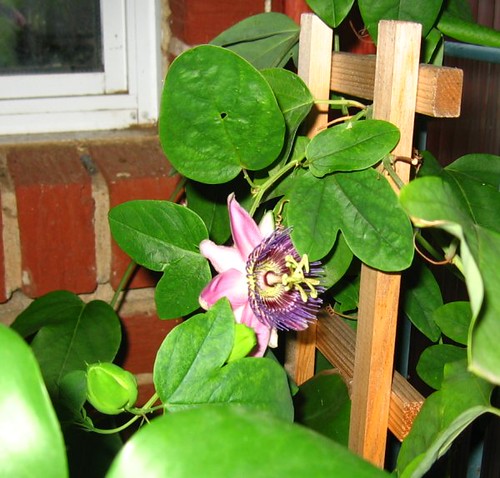 |
| Passiflora x alatocaerulea blooming in the greenhouse |
Back to the numerology of the bloom. The bloom consists of five petals and five sepals, which represents the ten apostles - leaving out Judas the betrayer and Peter the denier. The filaments can represent the thorns in Jesus's crown. Apparently there are 72 of them and that is how many thorns were in Jesus's crown, though I'm not sure where that knowledge came from... There are many myths and elements to teh Catholic faith that are not shared by the Protestant Christian denominations, of which I am a member. There are five stamens, which is the number of wounds that inflicted Jesus. In fact, the plant is referred to as "Flower of the Five Wounds" by South American Catholics.
Additional symbolism can be found in the shape of the leaves of some species of Passiflora, such that they look like spears, which pierced Jesus's side. And some dots underneath the leaves are to represent the 33 pieces of silver which were paid to Judas for the betrayal.
Passionflower blooms are only open for one day, the same time that Jesus suffered on the cross. After their show the bloom closes rather than falling from the vine, like many other flowers do. This closing symbolizes hidden wisdom and Jesus being placed into the tomb.
I hope that you had a wonderful Christmas and I wish the best in the New Year.





